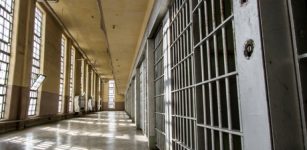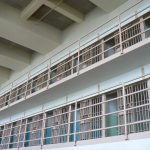The Netherlands Closes Prisons, While Australia Builds More

As previously reported, the Dutch prison system is suffering a curious problem: they don’t have enough inmates, so they’re closing down prisons. In 2014, the government shutdown 19 facilities, while in 2009, they closed the doors on eight.
And in March this year, the Dutch government announced that five more institutions are slated for closure over the next few years.
Compare this with Australia. Here, correctional facilities are bursting at the seams. Overcrowding is a major problem in every state and territory, except Tasmania, and the Australian prison population is rapidly growing.
The Dutch prison crisis
So what’s the cause of this rather desirable crisis they’re having in the Netherlands?
Well, Dutch authorities have changed the paradigm – rather than focusing on a punitive justice system, they’re emphasising rehabilitation.
If a prisoner has an issue with aggression, they’re given an anger management program, or if it’s money problems, they’ll receive debt counselling. And so called “revolving door” inmates are given a two-year sentence, along with a tailor-made rehabilitation program.
As well as rehabilitation, the environment within Dutch facilities also helps reintegrate inmates into society. They’re able to walk unaccompanied to the library or the clinic, which helps them adapt to life on the outside.
There’s also a focus on diversion and non-custodial penalties. Judges hand down sentences that don’t require prison time, such as community service orders, fines and electronic tagging. In this way, many who have broken the law are still able to keep their jobs and stay with their families, which help keep them connected with society and away from the negative effects of incarceration.
Only 10 percent of offenders are sent to prison, and judges are handing out shorter prison sentences.
The Netherlands is increasingly reserving imprisonment for those who are perceived as too dangerous to be let out into the general community, and those who are especially vulnerable and need help on the inside.
Prisoner numbers drop along with crime rates
The Dutch Justice Ministry announced in July this year, that the number of prisoners in the country dropped by 27 percent between 2011 and 2015.
The Netherlands had one of the highest incarceration rates in Europe in 2006, but it now has one of the lowest, with 57 out of 100,000 citizens imprisoned. By contrast, the Australian national imprisonment rate was 208 out of 100,000 in June this year.
The prison population in the Netherlands was 8,245 last year, while Australia’s is 38,685.
Significantly, the crime rate in the Netherlands has decreased by an average of 0.9 percent per year in recent years, while recorded crime has dropped by a staggering 25 percent over the past eight years.
But it isn’t just the focus on rehabilitation that’s brought about this drop in prison numbers, the Dutch have shifted their law enforcement focus away from drugs and into other areas such as human trafficking.
Drugs are treated as a health issue in the Netherlands, rather than a criminal problem. The government is tolerant on soft drugs like marijuana. While it’s still a criminal offence to possess cannabis, coffee shop owners who sell it and members of the public who possess small amounts are not prosecuted.
The Dutch prison system also has remarkably low recidivism rates, with fewer than 10 percent of inmates returning to prison after their release.
The Australian debacle
In Australia, around 40 percent of inmates return to prison within just 2 years. New South Wales’ recidivism rate is the worst of any state, with 48 percent of inmates sent back to gaol within 2 years. Only the Northern Territory has a higher rate.
And despite rates of most crimes having decreased over the last decade – besides sexual assault which is on the rise – the criminal justice system is meting out harsher sentences and imprisoning more people.
The Australian prison population is currently 38,685, up 8 percent over the last year alone. This is the highest number of incarcerated people in the country since the Australian Bureau of Statistics began collecting data in 1998.
The figures for incarcerated Indigenous Australians are much more damning. Aboriginal and Torres Strait Islander people are imprisoned at ten times the rate of non-Indigenous Australians.
As of June this year, 10,718 Indigenous Australians were in gaol, which is an 8 percent more than the previous year. Indigenous people represent 28 percent of the total full-time adult prison population, while only accounting for 2 percent of Australian adults.
The national imprisonment rate for Aboriginal and Torres Strait Islander people is 2,373 per 100,000.
Overcrowding is rife
Australia’s tough stance on crime is overcrowding the prison system and costing taxpayers around $3.8 billion a year.
“There has been an increased escalation of violence inside the prisons,” the Commonwealth and Public Sector Union’s Karen Batt told the ABC last year, adding that this is both prisoner on prisoner violence, as well as prisoner on prison guard.
Inmates have been reportedly sleeping on mattresses on the floor and in fold-out beds in Queensland, Victorian and South Australian facilities. Besides a ban on tobacco, a report found another major reason for the Ravenhall prison riot in Melbourne last year was overcrowding in the remand centre.
NSW has the highest state prison population at 12,641 as of September this year. This is an increase of over 21 percent over the last two years. The reaction of NSW Corrective Services Commissioner Peter Severin was to say that “you can’t build prisons fast enough at the moment.”
Luxury hotels and foreign imports
Back in the Netherlands, authorities have come up with some interesting uses for the prisons they’ve closed down. Some have been turned into luxury hotels, while others into reception centres for asylum seekers.
However, not everyone in the Netherlands is overjoyed about what’s going on.
The prison guards’ representative from the Netherlands Trade Union Confederation, Frans Carbo, told the BBC that its members are angry about the lack of work, and young people no longer want to join the prison service.
So in an effort to protect their jobs, the Dutch government has begun importing foreign inmates from Norway and Belgium.







